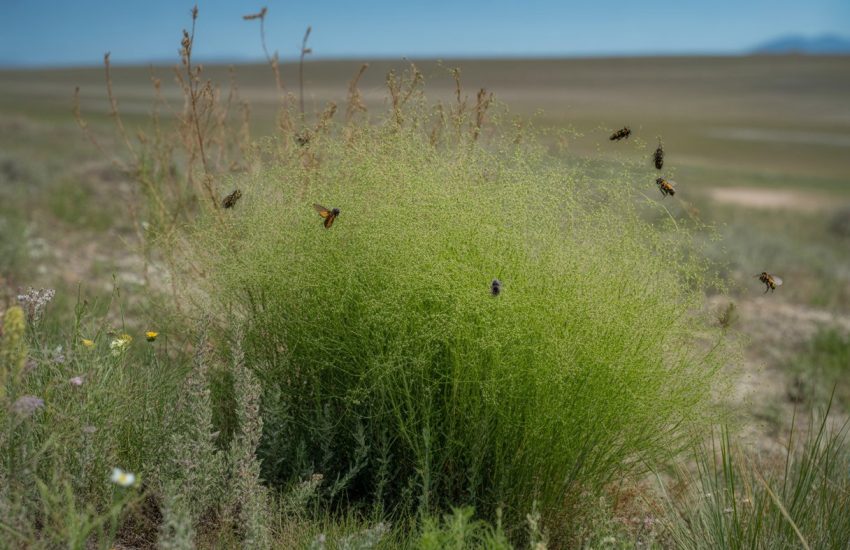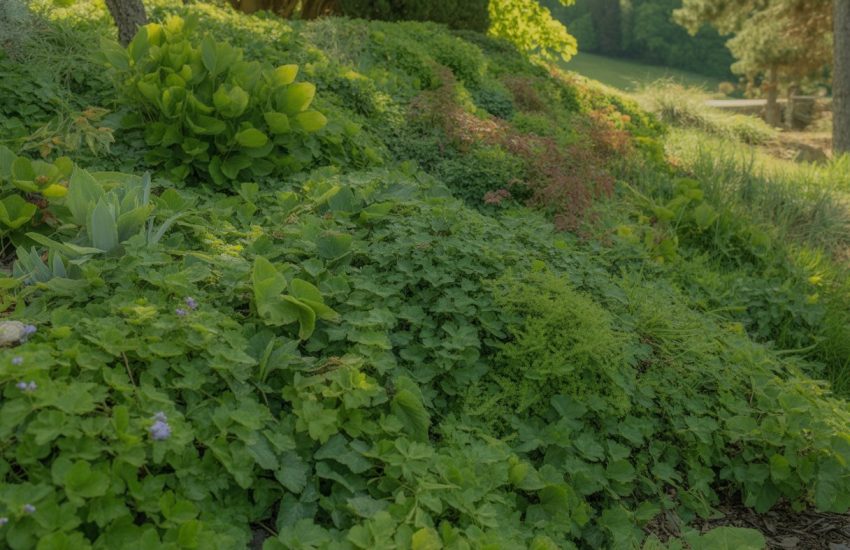Love Lies Bleeding Plant: A Guide to Growing and Caring for this Unique Annual
Love lies bleeding plant, also known as Amaranthus caudatus, is a unique and striking plant that is native to South America. It is known for its long, drooping red flowers that resemble tassels or ropes, giving it a distinctive appearance. The plant has been cultivated for centuries for its ornamental value, and its leaves and seeds have also been used for medicinal and culinary purposes.
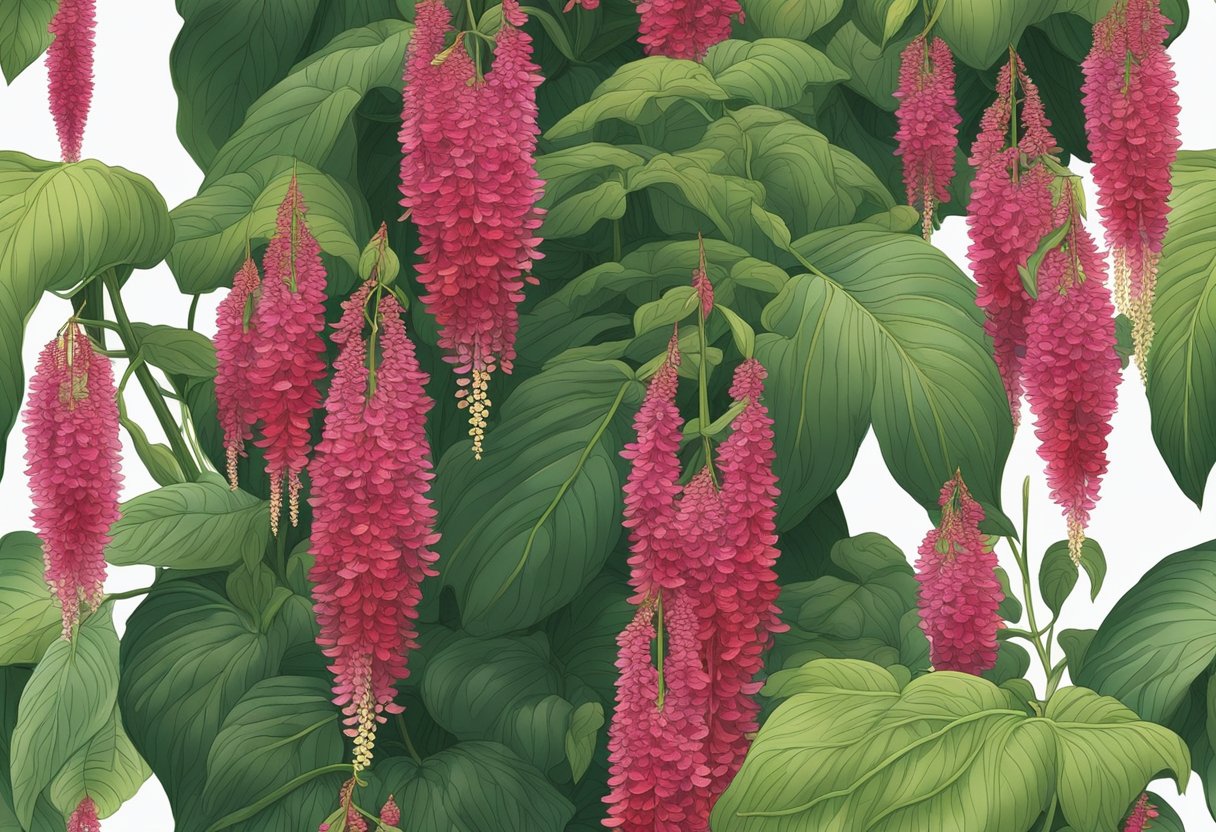
Love lies bleeding plant belongs to the Amaranthaceae family, which includes over 2,500 species of plants. It is an annual plant that can grow up to 6 feet tall and 3 feet wide, depending on the growing conditions. The plant prefers full sun and well-drained soil, and can tolerate drought and poor soil conditions. It is a hardy plant that is easy to grow, making it a popular choice for gardeners and landscapers.
Despite its name, love lies bleeding plant has no association with love or bleeding. The name is believed to have originated from the plant’s long, drooping flowers, which were thought to resemble the tears of a broken heart. In some cultures, the plant is also known as “Inca wheat” or “kiwicha”, and its seeds have been used as a staple food source for centuries. With its unique appearance and versatile uses, love lies bleeding plant is a fascinating and valuable addition to any garden or landscape.
Botanical Overview

Species and Common Names
Love lies bleeding, also known as Amaranthus caudatus, is a species of ornamental plant in the Amaranthaceae family. It is native to South America but is now widely cultivated in gardens all over the world.
The plant is commonly known as tassel flower or foxtail amaranth due to its distinctive, drooping, tassel-like inflorescences. The name “love lies bleeding” is derived from the plant’s long, blood-red, pendulous flowers that resemble droplets of blood.
Botanical Characteristics
Love lies bleeding is an annual plant that can grow up to 1.5 meters in height. Its leaves are broad and lance-shaped, with a deep green color. The flowers are borne on long, erect stems that arise from the leaf axils. The inflorescences are dense, cylindrical spikes that can reach up to 60 centimeters in length.
The flowers themselves are small and inconspicuous, but the bracts that surround them are large and showy, ranging in color from deep red to pink, purple, and white. The plant blooms from late summer to early fall and produces copious amounts of seed.
Love lies bleeding is an easy-to-grow plant that thrives in full sun and well-drained soil. It is often used as a bedding plant, border plant, or container plant, and its striking inflorescences make it a popular choice for cut flower arrangements.
Overall, love lies bleeding is a beautiful and unique ornamental plant that is sure to add interest and color to any garden or landscape.
Cultivation
Planting Guidelines
Love lies bleeding plants can be grown from seeds or cuttings. Seeds should be sown in a well-draining soil mix in the early spring. The seeds should be covered with a light layer of soil and kept moist until they germinate, which usually takes around 10 to 14 days.
If you’re planting cuttings, make sure they are taken from healthy plants. Cut a stem about 4 inches long, remove the lower leaves, and dip the cut end in rooting hormone. Plant the cutting in a well-draining soil mix and keep it moist until it roots, which usually takes around 2 to 3 weeks.
Soil Requirements
Love lies bleeding plants prefer a well-draining soil with a pH between 6.0 and 7.0. They can tolerate slightly acidic soil but won’t grow well in alkaline soil. Adding organic matter such as compost or aged manure to the soil can help improve drainage and fertility.
Sunlight and Location
Love lies bleeding plants thrive in full sun to part shade. They can grow in full shade but may not produce as many flowers. When choosing a location, make sure it has good air circulation to prevent fungal diseases.
Watering and Moisture
Love lies bleeding plants are drought-resistant but prefer to be kept moist. Water the plants deeply once a week, or more often in hot, dry weather. Avoid getting water on the leaves as this can lead to fungal diseases.
Climate Adaptability
Love lies bleeding plants are adaptable to a wide range of climates and can be grown in USDA zones 2 to 11. They prefer warm summers but can tolerate cooler temperatures. In hot, dry weather, they may benefit from some afternoon shade.
Growth and Care
Love lies bleeding plant, also known as Amaranthus caudatus, is a beautiful and unique addition to any garden. It is a hardy annual that grows quickly and easily, reaching heights of up to 3 feet. Here are some tips for growing and caring for this plant.
Fertilization and Nutrition
Love lies bleeding plant thrives in fertile, nitrogen-rich soil. Before planting, amend the soil with compost or other organic matter to provide the plant with the nutrients it needs to grow strong and healthy. Additionally, it is recommended to fertilize the plant every 4-6 weeks with a balanced fertilizer to promote growth.
Support and Pruning
As the plant grows, it may become top-heavy and require support to prevent it from falling over. Staking or caging the plant is recommended to keep it upright. Additionally, pruning the plant can help promote bushier growth and prevent it from becoming too leggy.
Pest and Disease Management
Love lies bleeding plant is generally resistant to pests and diseases. However, aphids and ants may occasionally be a problem. If this occurs, spraying the plant with a solution of water and dish soap can help control the infestation. Additionally, root rot and virus can be a concern, so it is important to ensure the plant is not overwatered and to promptly remove any infected plants to prevent the spread of disease.
Harvesting and Seed Collection
Love lies bleeding plant produces beautiful, long-lasting blooms that can be cut and used in floral arrangements. To harvest the flowers, cut the stems just as the flowers begin to open. Additionally, the plant produces small, black seeds that can be collected for future planting. Simply allow the seeds to dry on the plant, then remove and store in a cool, dry place until ready to plant.
Overall, love lies bleeding plant is a low-maintenance and rewarding addition to any garden. With proper care and attention, it will provide beautiful blooms and seeds year after year.
Uses and Applications
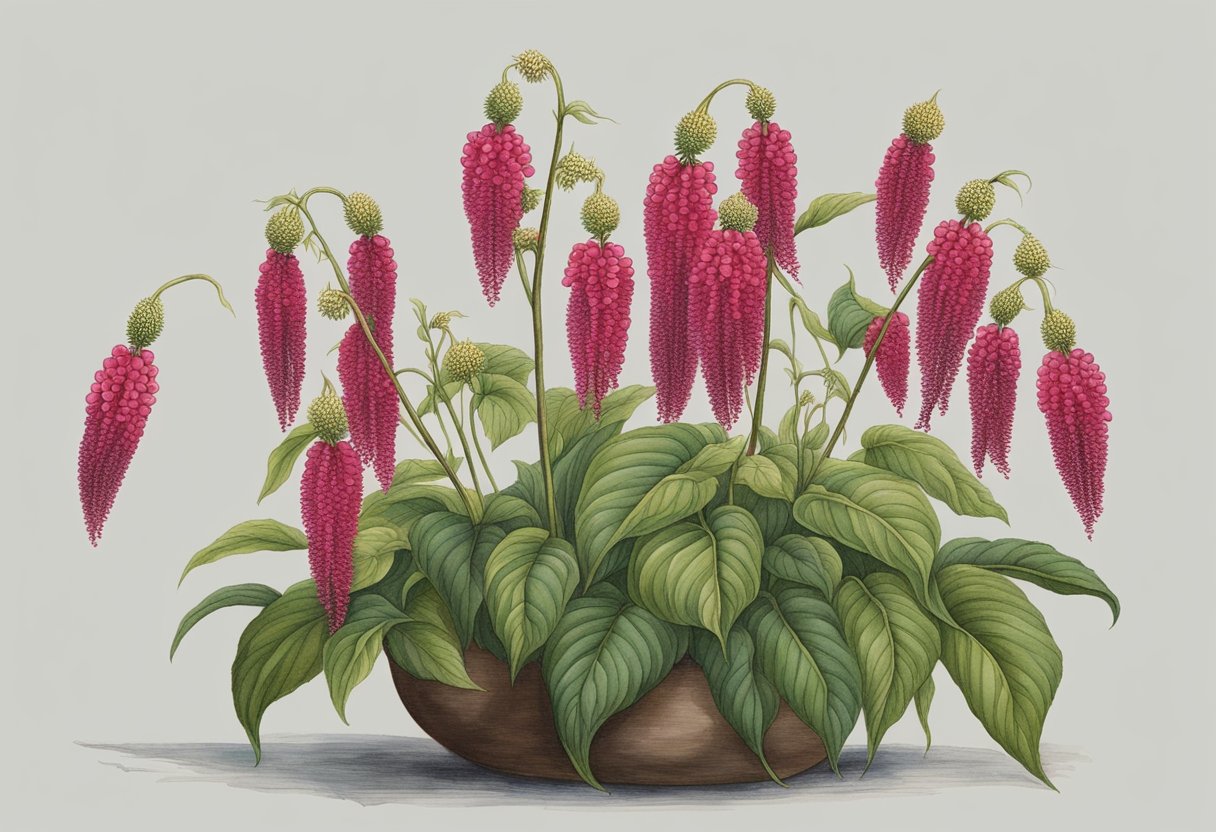
The Love Lies Bleeding plant has a wide range of uses, from culinary to ornamental and medicinal. Its long, drooping red flowers make it a popular choice for dried flower arrangements. In this section, we will explore some of the most common uses and applications of this unique plant.
Culinary Uses
The Love Lies Bleeding plant is an edible plant that has been used in various dishes for centuries. The young leaves and stems can be cooked and eaten like spinach, while the seeds can be roasted and used as a gluten-free flour substitute. In Africa and Peru, the plant is commonly used as a vegetable, and in India, it is used in traditional Ayurvedic medicine.
Ornamental Use
The Love Lies Bleeding plant is a popular ornamental plant due to its unique, long red flowers that droop down like tassels. It is often used in dried flower arrangements and can add a touch of exotic beauty to any room. The plant is easy to cultivate and can thrive in a variety of environments, making it a popular choice for gardeners.
Medicinal and Cultural Significance
In Inca culture, the Love Lies Bleeding plant was believed to have medicinal properties and was used to treat various ailments. Today, the plant is still used in traditional medicine to treat conditions such as high blood pressure and respiratory issues. It is also believed to have cultural significance, representing love and passion.
In conclusion, the Love Lies Bleeding plant is a versatile and unique plant that has a wide range of uses and applications. Whether you are looking to add some exotic beauty to your home or explore the plant’s medicinal properties, Love Lies Bleeding is a fascinating plant that is worth exploring.
Propagation
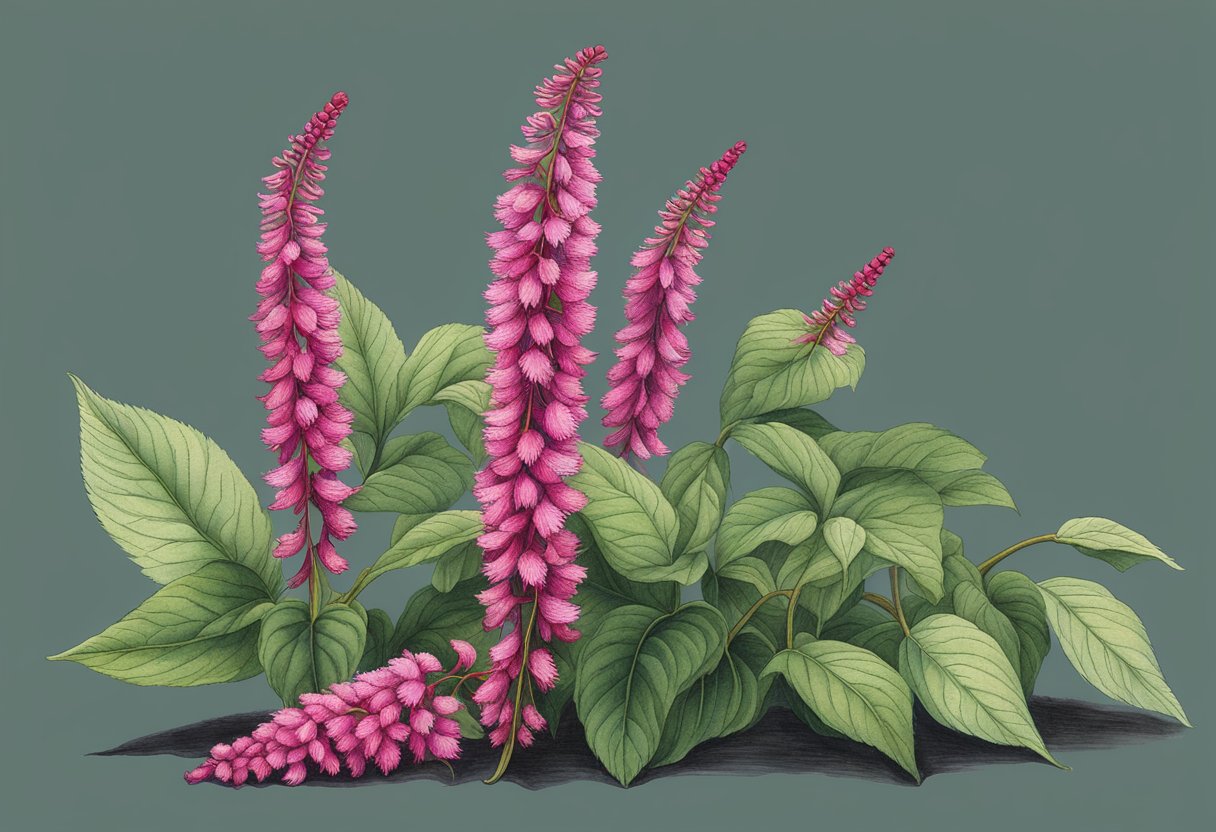
Seed Germination
Love lies bleeding plant is easy to propagate from seeds. The seeds should be sown directly into the garden bed in late spring or early summer, after the last frost. It is important to choose a sunny location with well-draining soil. The seeds should be sown at a depth of about 1/4 inch and spaced about 12 inches apart.
The soil should be kept moist but not waterlogged until the seeds germinate, which usually takes about 7 to 14 days. Once the seedlings have emerged, they should be thinned to a distance of about 18 to 24 inches apart.
Transplanting Seedlings
Alternatively, the seeds can be started indoors in late winter or early spring. Plant the seeds in a seed-starting mix and keep the soil moist and warm. Once the seedlings have developed their second set of leaves, they can be transplanted into individual pots.
When the seedlings are about 6 to 8 inches tall and the danger of frost has passed, they can be transplanted into the garden bed. It is important to harden off the seedlings by gradually exposing them to outdoor conditions over a period of several days before transplanting them.
In summary, love lies bleeding plant can be easily propagated from seeds. Sow the seeds directly into the garden bed or start them indoors. Keep the soil moist and provide plenty of sun. Transplant the seedlings into the garden bed once they have developed their second set of leaves and the danger of frost has passed.
Design and Landscaping
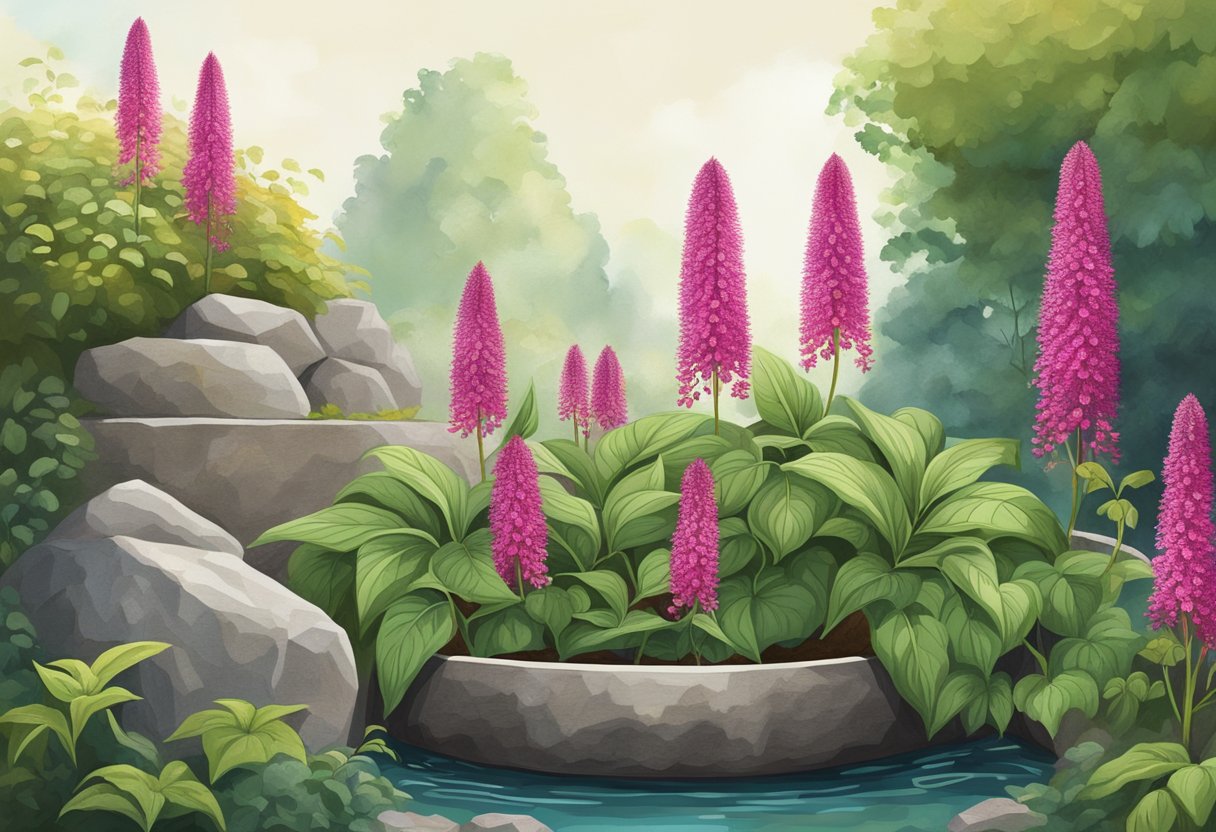
Garden Beds and Borders
Love Lies Bleeding is a beautiful plant that can add a touch of elegance to any garden bed or border. It is a great choice for gardeners looking for a unique and eye-catching addition to their landscape. The plant’s long, drooping flower spikes can reach up to 3 feet in length, making it an excellent choice for creating a dramatic effect in the garden.
When planting Love Lies Bleeding in garden beds or borders, it is important to choose a location that receives full sun or partial shade. The plant prefers well-drained soil and should be watered regularly to keep the soil moist but not waterlogged. Love Lies Bleeding can grow up to 5 feet tall, so it is important to give it enough space to spread out and grow.
Container Gardening
Love Lies Bleeding is also a great choice for container gardening. The plant’s tall, upright growth habit makes it an excellent choice for adding height and drama to container gardens. Love Lies Bleeding can be grown in both upright and hanging baskets, making it a versatile choice for any container garden.
When planting Love Lies Bleeding in containers, it is important to choose a container that is at least 12 inches deep and wide. The plant prefers well-drained soil and should be watered regularly to keep the soil moist but not waterlogged. Love Lies Bleeding can grow up to 5 feet tall, so it is important to give it enough space to spread out and grow.
Creating Focal Points
Love Lies Bleeding is a great choice for creating focal points in the garden. The plant’s long, drooping flower spikes can be used to draw the eye and create a dramatic effect in the garden. Love Lies Bleeding can be used as a standalone plant or combined with other plants to create a stunning display.
When using Love Lies Bleeding as a focal point in the garden, it is important to choose a location that receives full sun or partial shade. The plant prefers well-drained soil and should be watered regularly to keep the soil moist but not waterlogged. Love Lies Bleeding can grow up to 5 feet tall, so it is important to give it enough space to spread out and grow.
Overall, Love Lies Bleeding is a great choice for gardeners looking for a unique and eye-catching addition to their landscape. With its long, drooping flower spikes and tall, upright growth habit, Love Lies Bleeding can add height, drama, and elegance to any garden bed, border, or container garden.
Wildlife Attraction and Interaction
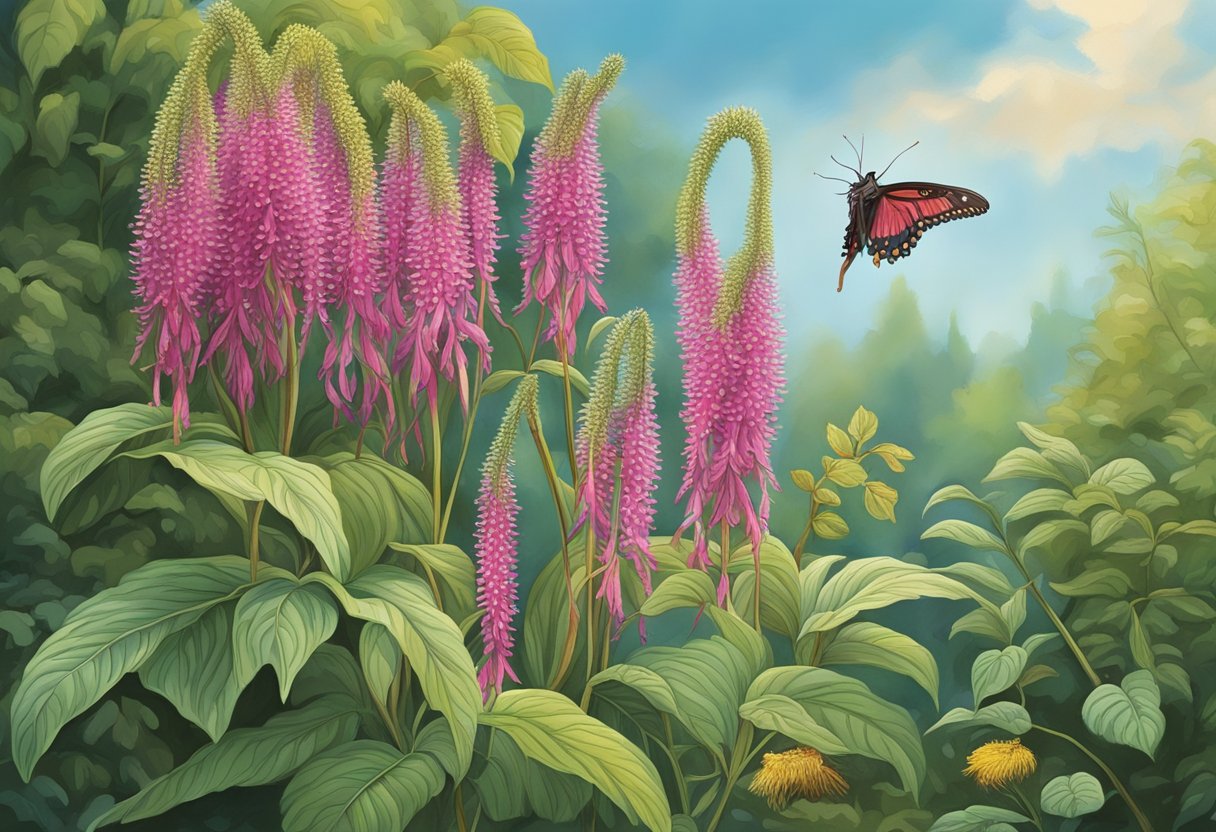
Attracting Pollinators and Birds
Love lies bleeding plants are known to attract a wide range of pollinators, including bees, butterflies, and hummingbirds. The plant’s bright red flowers are especially attractive to hummingbirds, who are known to feed on the nectar produced by the flowers.
In addition to attracting pollinators, love lies bleeding plants are also known to attract a variety of bird species. Birds are attracted to the plant’s bright red flowers and are known to feed on the seeds produced by the plant.
Dealing with Wildlife Interest
While love lies bleeding plants are known to attract a variety of wildlife, it is important to take precautions to protect the plant from excessive damage. One way to protect the plant from wildlife interest is to plant it in a location that is not easily accessible to animals.
Another way to protect the plant from wildlife interest is to use physical barriers, such as netting or fencing, to keep animals away from the plant. This can be especially important during the plant’s early growth stages, when it is most vulnerable to damage.
Overall, love lies bleeding plants are a great addition to any garden or landscape, as they are known to attract a wide range of wildlife, including pollinators and birds. By taking precautions to protect the plant from excessive damage, it is possible to enjoy the beauty and benefits of this unique plant for years to come.
Varieties and Related Plants

Cultivars and Hybrids
Love Lies Bleeding is a unique plant with its deep red, velvety flowers. There are several cultivars and hybrids of this plant that have been developed over the years. One of the most popular cultivars is the ‘Green’ variety, which has green flowers instead of the traditional red.
Another popular cultivar is the ‘Purple’ variety, which has purple flowers that are slightly smaller than the traditional deep red flowers. The ‘Velvet Flower’ cultivar is also highly sought after for its unique texture and appearance.
Comparative Species
Love Lies Bleeding is part of the Amaranthus Caudatus species, which is commonly known as the ‘Everlasting’ plant. There are several other species within the Amaranthus family that are similar to Love Lies Bleeding in appearance and characteristics.
One such species is the Amaranthus Tricolor, which has colorful leaves that range from green to red to yellow. Another species is the Amaranthus Paniculatus, which has long, drooping flower clusters that are similar in appearance to Love Lies Bleeding.
Overall, Love Lies Bleeding is a unique and beautiful plant that has captured the attention of gardeners and plant enthusiasts around the world. With its deep red, velvety flowers and distinctive appearance, it is sure to remain a popular choice for years to come.
Challenges and Considerations

Invasive Potential
Love lies bleeding plant, also known as Amaranthus caudatus, has the potential to become an invasive weed in certain areas. This plant is known for its ability to self-seed and spread quickly, which can result in it taking over native plant habitats. Therefore, it is important to be cautious when planting love lies bleeding and to monitor its growth closely.
Environmental Impact
While love lies bleeding is a beautiful and unique plant, it does have some potential environmental impacts that should be considered. This plant is frost-sensitive and does not do well in hot summer climates, but it is drought-tolerant and can thrive in afternoon shade. However, its ability to self-seed and spread quickly can result in it competing with native plants for resources.
To minimize the environmental impact of love lies bleeding, it is recommended to plant it in areas where it will not spread uncontrollably. Additionally, it is important to properly dispose of any plants or seeds to prevent them from spreading to new areas.
Overall, love lies bleeding plant can be a great addition to any garden or landscape, but it is important to consider the potential challenges and environmental impact before planting. By being aware of these factors and taking appropriate precautions, it is possible to enjoy the beauty of this unique plant without causing any problems.
Frequently Asked Questions
How can I propagate Love Lies Bleeding plants?
Propagation of Love Lies Bleeding plants can be done through seeds or stem cuttings. Sow the seeds in well-draining soil and keep them moist until they germinate. Stem cuttings can be taken from the parent plant and rooted in moist soil.
What are the care requirements for Love Lies Bleeding plants?
Love Lies Bleeding plants require well-draining soil, full sun exposure, and regular watering. The soil should be kept moist but not waterlogged. These plants are also sensitive to frost and should be protected during the winter.
How tall does the Love Lies Bleeding plant grow?
Love Lies Bleeding plants can grow up to 5 feet tall, with long, drooping clusters of flowers that can reach up to 2 feet in length.
Can Love Lies Bleeding be grown in pots?
Yes, Love Lies Bleeding can be grown in pots as long as the pot is large enough to accommodate the plant’s size and has good drainage.
What is the symbolism behind the Love Lies Bleeding flower?
The Love Lies Bleeding flower is often associated with love, passion, and sacrifice. It is also a symbol of mourning and loss in some cultures.
Is the Love Lies Bleeding plant considered toxic to humans or pets?
The Love Lies Bleeding plant is not considered toxic to humans or pets. However, it is always recommended to keep plants out of reach of children and pets to prevent accidental ingestion.

